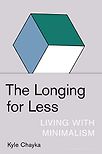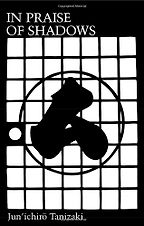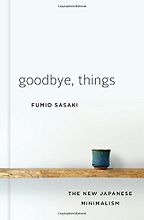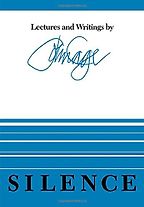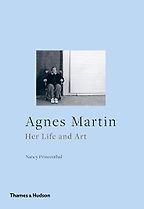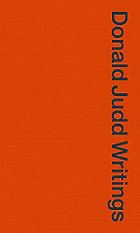You’ve put together a fantastic list of books on minimalism. How should we think of minimalism: is it a movement, a philosophy, an aesthetic, a way of life?
That’s a good question. It’s a tough one. I do like thinking about it as a philosophy, because I think ‘philosophy’ can encompass all those things. Philosophy involves ideas and it involves aesthetics. What’s most present for people now is the lifestyle of minimalism: the commercialism of minimalism, and the ways in which it’s branded and sold back to people as minimalist self-help books and the minimalist table lamps and minimalist skincare routines, all that stuff. So I think people what connect with the most right now is minimalism as a way of living, unfortunately: a commodified philosophy, or a commodified principle for life.
Through my book, I wanted to get more toward the philosophy than toward the products that are called minimalist.
Yes, you trace the origins—or early examples—of minimalist thought back to the Stoics. You quote Marcus Aurelius: That which is really beautiful has no need of anything.” Is minimalism, or Minimalism, a continuous movement? Or is it a notion that just keeps coming back?
To me, it’s more of a cyclical idea. Minimalism does have this tendency to erase its own background; it always presents itself as if it’s this new idea, to throw everything out and start over. Much like Marcus Aurelius, 2000 years ago: ‘Oh, what a great idea. Something that’s perfect, that doesn’t need anything else. We should just throw out all the extraneous stuff, and we will find the perfect thing.’ I don’t think that’s ever been a new thought. I’m sure this occurred far before Marcus Aurelius’ time as well. And it never quite reaches its goal.
Minimalism becomes appealing to many people at certain moments—when there’s a lot of societal upheaval or a chaotic political moment, any kind of chaos. Then it becomes appealing to think that if only we threw out everything extraneous and lived more simply, then we would be happier.
So I have trouble calling it a movement, except maybe right now, the heavily branded minimalist lifestyle. Because I don’t know that it connects; I don’t know that each person has been influenced by the previous person in the way that you might think of with liberalism, or political humanism.
But I do think there’s this path you can trace through history with people who have participated in this idea, moved it in different directions, try it again over and over again. It’s never a permanent condition. Minimalism does not fail, per se, but falls out of favor. It never provides the solution that it pretends to provide.
You give a very striking statement in the opening section of your book: there are 300,000 household possessions in the average American home. And, of course, we are currently experiencing in a period of particular epidemiological, political and climatological anxiety. Is that why there is this hunger for minimalist self-help, for books like Marie Kondo’s?
I do think we’re in a chaotic moment, right now. So much feels beyond the control of the individual. Whether it’s electoral politics, or climate change, or coronavirus, so many things feel beyond our perception. They’re too large to grasp. We’re more aware of all those things.
Yes. I’ve seen climate change described as a ‘hyper-object’—that is, something too complex to truly comprehend or focus on at once.
Minimalism is this instinctual response to being overwhelmed. I think the accumulation of household items is maybe the longest-running problem; people have always owned a lot of stuff. But the more important facet is psychological: the feeling of being overwhelmed, like there’s just too much to think about and too much to deal with.
Minimalism becomes a way of narrowing your reference frame down to what you can control and what’s immediately around you. To me, it often seems like an excuse to focus on the individual lifestyle, the individual perspective without while making the excuse that, oh, you know, building a communal politics is just too far beyond what I can accomplish. So instead I’m going clean my house.
Huh, I hadn’t thought of it like that. Decluttering to create an illusion of control. Let’s move to your first book recommendation on minimalism: this is the 1933 essay In Praise of Shadows by Junichiro Tanizaki. It’s a cult text on Japanese aesthetics. What would you like to say about it?
I like books that try to preserve a sensibility, a moment in history, and Tanizaki definitely does here. He’s writing a little essay—in a kind of a casual newspaper column format—memorialising the world of traditional Japan in the moment that Tokyo is becoming super-modernised. There are trains running, skyscrapers going up, neon signs everywhere. Tanizaki is mourning what has been paved over, which is the old Japanese aesthetic of darkness, of softness, of appreciating the imperfect—rather than the cold, glossy surfaces of industrialized modernity that the West had brought to Japan at that moment.
For me, that’s really valuable, because it does preserve a different way of looking at the world. Tanizaki’s idea is that we should look into the shadows instead of pursuing an ever greater light: we don’t need to pursue growth and expansion and profit; we don’t need to pave over the world with glass and steel. Instead, we should be living with what’s already around us and adapting to the ephemerality of life.
Tanizaki confronts the same problem that we are now—that the world feels big and confusing and loud and too bright. He wants to retreat, to move to an older sensibility. I’m very sympathetic to that, I find it really appealing. We can’t go back to only having wooden toilets and eating in the dark, but I want to remember the fact that how things are is not the way they always were. I think that’s super valuable, a glimpse of another way of being in the world.
It’s interesting that two of the books on this list are written by Japanese authors, and both Agnes Martin and John Cage—who we will come onto shortly—wrote about their interest in Zen. So should we see minimalism as having Far Eastern roots, or at least that flavour?
Certainly minimalism, or the formal art movement of Minimalism of the 1950s and 1960s, did have roots in Zen. Artists like John Cage and Agnes Martin were among the first American artists to adopt those ideas, through the Japanese professor D T Suzuki, who was teaching at Columbia.
There was this moment of transmission, when the ideas of Zen and Japanese Buddhism were coming to the United States for the first significant time. (Although it’s important to note that there was already more East Asian influence in California.) So these artists were literally influenced by Japanese culture, and adopting its ideas as they understood it.
“Zen addresses this paradox of absence and presence; it advocates thinking about absence, and thinking about nothingness”
But the ‘roots’ question is, again, difficult, because rather than a linear-causal relationship it’s better to say that the ideas of Japanese Buddhism have a lot in common with, or are very sympathetic to, what we talk about as minimalism now. Zen addresses this paradox of absence and presence; it advocates thinking about absence and thinking about nothingness, and engaging with ambiguity. Philosophically, I think there’s a lot in common, and aesthetically there’s certainly a lot in common. It’s austerity as a visual mode, which I think is really significant. So you can look at ink wash paintings, or calligraphy, which both put intention like the black mark against the white (or beige) void of the paper.
In the book, I also talk a lot about rock gardens, an iconically minimalist image to Westerners—an empty visual field of rocks, and only a few big stones emerging from this field of gravel: one thing framed against nothingness. I think that has a lot in common with what most artists in New York in the 1960s did.
Yes. To loop back to the Tanizaki essay: it’s almost 90 years old now. But you feel there’s a lot people can still take from it?
It definitely has problematic politics. Tanizaki is definitely misogynist in this text. And it celebrates these experiences that are extremely pretentious and cannot be reclaimed. Like: oh, you know, wasn’t it great when puppet theater was only lit by candles; or, back in the day, all women were skeletal and that was beautiful. Those things aren’t great. But I do think that in this moment when we’re still confronting what industrialized modernity has done to us, this book has a lot to say. Because it advocates the opposite.
There’s this really great line in there:
We Orientals tend to seek our satisfactions in whatever surroundings we happen to find ourselves, to content ourselves with things as they are; and so darkness causes us no discontent, we resign ourselves to it as inevitable. If light is scarce, then light is scarce; we will immerse ourselves in the darkness and there discover its own particular beauty. But the progressive Westerner is determined always to better his lot. From candle to oil lamp, oil lamp to gaslight, gaslight to electric light—his quest for a brighter light never ceases, he spares no pains to eradicate even the minutest shadow.
I think, when confronting something like climate change or just the superhuman scale of everything that we’re dealing with right now, there is that desire to live more in the shadows, or to just live with what’s already around us—to live more quietly and softly than we have before.
To me, In Praise of Shadows is one of the few texts that argues for that convincingly, and offers this beautiful way of living on a smaller scale. Personally, and this is just my own bias, I think no political or social movement can exist without a cultural aspect, a coherent cultural production. So the way that Tanizaki links this anti-Western, anti-modernity argument with an aesthetic and with a mode of cultural consumption . . . I think that is very productive, to use a dry term. It presents a meaningful alternative, I think.
When Tanizaki talks about ‘shadow’, is he speaking literally? Or is this about accepting darkness in a broader sense?
At the beginning of the book, he’s kind of literal about it. He talks about how instead of electric light bulbs, we should have candles or lanterns. He doesn’t want the transparency of glass windows; he wants the softness and diffusion of paper screens. But I think through the essay, shadow becomes a more metaphorical thing: searching for ambiguity in life, and trying to find a less greedy way of living. Shadow is this way of being that’s not about permanence; it’s not about accumulation. It’s just about being more in harmony with the world around you, being content with the shadow and the darkness.
Thanks. Let’s talk about Donald Judd’s Writings next. Judd himself said: “There isn’t any such thing as Minimalism.” And yet you have identified his 1963 show as ground zero for the modern art movement. So why should we think of Judd as being a Minimalist, to begin with?
So, Judd was one of a group of artists who was practicing this genre of art in the 1960s in Manhattan. The term ‘Minimalism’ comes from this text in 1964 by the British art theorist David Wilhelm, who was working in New York at that point; he drew a circle around this particular group of artists that included Judd and Robert Morris and Dan Flavin and some others. He said that their work had “minimal art content,” because these artists were adopting industrial materials, making objects that didn’t look like art. They weren’t making expressive paintings. They weren’t communicating deep emotion. They were just making these objects that stood in front of you in the gallery.
To him, ‘minimal’ was this word to describe why they were so uncomfortable, because the viewer does not recognise the usual symbols of an artwork. They don’t recognise information, or narrative, or the attempt to communicate deep feeling, whatever. This is Minimalism.
There has been a lot of critical debate over what to call this group of artists. There are other alternatives: ‘ABC art,’ or ‘literal art,’ or ‘boring art.’ But Minimalism is what stuck. And, you know, it’s a great coinage, because we use it a lot today.
Five Books interviews are expensive to produce. If you're enjoying this interview, please support us by donating a small amount.
So Judd was making his work at that moment, and working as an art critic as well. He feels this deep need to critically justify and theorize around his work. So he also writes this essay called ‘Specific Objects,’ in which he draws another circle around basically the same group of artists, but instead of calling their art ‘minimal,’ he says, no, these artists are making specific objects. They’re not trying to create a narrative, they’re just trying to create . . . well, the great line in the essay is an artwork “needs only to be interesting.” As in, creating visual interest is the only necessary goal of the artwork.
He was upset to be called a Minimalist for the entirety of his life. I think Judd, and many other artists, felt slighted by this word ‘minimal’ because it gave too much of a suggestion that they weren’t doing anything, or that they had failed in some way.
Judd always thought it was a mistake that he was labelled a Minimalist, and thought that Minimalism as a movement did not exist, and was just an invention of critics. There was no movement, in his mind. And he was kind of right, actually, because there was no coherent, Minimalist idea. The artists were not necessarily colluding. They were not identifying with each other.
No manifesto.
No. They were all very independent. And they all had different ideas of what Minimalism was. So, at least in a formal art context, I think it’s a mistake to talk about a single Minimalism, and instead we should talk about how these different artists have approached the idea of minimalism in different ways—even though it all ends up looking very similar.
Judd was never one to accept any labels; his entire practice was kind of anti-label. His lifestyle was as well. He moved out of Manhattan, far out into the Texas desert, to a place called Marfa. He produced some of his most famous artworks there.
Yes. Marfa has become a bit of a Mecca for art lovers since then. A road trip destination. There’s an interesting parallel here between what you’ve said about minimalism as a lifestyle, and the commodification of art in Marfa.
Yeah. I think Judd got stuck in his own trap. In the mid 1960s, he fought against Minimalism, but then kind of proposed his own term for what was going on. Then by trying to escape the art world in Manhattan, by trying to leave behind all the bullshit and move out into the desert, by trying to escape and find a way to make an art that was independent and self-sustaining and had no context, essentially, he made it ever more into its own separate thing. By moving to the desert and creating this life for himself, he enshrined Minimalism as a way of living, a holistic approach to life, rather than just an aesthetic decision.
So, to me, Judd pioneered a lot of the things that we associate with the minimalist lifestyle. He lived in a giant warehouse loft in Soho in Manhattan. In Marfa, he bought these airplane hangars and industrial buildings and converted them into home spaces and studios. So he evolved this aestheticised way of living, in very large spaces. He also started building his own furniture, which he didn’t think of as art necessarily, because it fulfilled a function. But simply by making furniture that looked kind of like his artwork, he was proposing, maybe subconsciously, that this was not just an object in a gallery, but a way of existing in the world. The Minimal aesthetic could be applied not just to a sculpture, but to a chair or a table or a bookshelf or a building. Without Judd, maybe we wouldn’t have associated Minimalism with architecture and design.
And I think that his creating that kind of lifestyle led the way toward the commodification of Minimalism as a consumer good. There’s a path from Judd’s loft in Soho, to more people living in lofts in Soho, and to artists moving out to Marfa. Eventually, Calvin Klein did a fashion photoshoot in Marfa. And art galleries continue to adopt this very spare, austere, industrial aesthetic.
Over time, that mode that Judd pioneered has become more and more mainstream, and made Marfa a product, instead of what it was for Judd: a very personal choice. So to me, Judd’s minimalism is really about expressing your personal taste and making a very intentional decision about everything that’s around you, everything that you own or make for yourself. But later versions of minimalism have just adopted what Judd chose for himself as the ideal.
I want to get back to minimalism as a way of making your own decisions, of forcing yourself to be more aware of how things in your life fit together, and what your taste is. Instead, I think often minimalism encourages us to just take the shortcut. It’s like, oh, I can just buy it and have the perfect stuff.
This question of minimalism as a lifestyle brings us to your third book choice. This is Goodbye Things: The New Japanese Minimalism. This is essentially an instruction manual for getting rid of all your belongings. There are a number of similar minimalist guide books out there, Marie Kondo’s The Life-Changing Magic of Tidying Up is probably the most famous; the others have, I think, spun off from her success. So why do you want to discuss Fumio Sasaki’s book?
I want to talk about it as an example of this genre of minimalist self-help lifestyle books.
Marie Kondo was not the pioneer of minimalism in the United States, though this lifestyle movement is almost solely associated with her. Before her, there was a group of bloggers in the 2000s, following the financial crisis, who were presenting these ways to live with less stuff, or get out of debt, or just embrace simplicity. These were not necessarily design-minded people, or artists or creatives in New York. Some of them were, like, religious people in the Midwest who claimed that Jesus was a minimalist.
I think those bloggers, and then the success of Marie Kondo, primed the publishing industry for this explosion of minimalist self-help books, and Fumio Sasaki is a really interesting and funny example because it’s so extreme.
“The problem of minimal self-help is that it often presents a single solution to all these problems”
Sasaki is actually an executive at a publishing house, but throughout the book he describes how he is dissatisfied with his job and feels like he has failed in life. He buys cameras but isn’t a photographer, he owns DVDs, but isn’t enough of a movie snob. It’s a very strange narrative, of having failed to translate creative interests into taste or into a successful career. So he decides to give it all up: no more camera, no more DVDs, no more TV. ‘I’m just going to live in my empty little box-like apartment, and that will help me like transcend my identity as a loser’—as he calls himself, which is kind of sad.
Oh no! But the throwing out of these objects is supposed to signal, what, acceptance of who he really is?
I think so. The problem of minimal self-help is that it often presents a single solution, a single aesthetic, as the answer to all these problems—like creative frustration, and just a lack of feeling successful as a human being. His solution is instead to have no expectations, and exist on as small a scale as possible. So he reduces expectations to nothing as well. And, to me, that’s, that’s a very sad answer to those problems.
This book, as in this whole self-help genre, has a very funny structure. They’re less memoirs or essays than literal manuals: step-by-step lists, with tips and tricks and little boxes and stuff. Sasaki not only describes how he cleaned out his apartment, but has a list of everything he earns, and suggests that you try to buy the same things. He tells you why you should live with only one low table instead of, you know, a dining room. So I think this book in particular presents a particular aesthetic and style that goes with ‘the minimalist lifestyle.’ There’s a connection that formed in the past five or ten years between living simply and the art or design mode of minimalism. This book is part of that.
He offers images of ‘before’ and ‘after’ his transformation. It’s very impressive, but also quite oppressive in how stripped back it is. You write in your book that Sasaki “sees living with less as an Edenic state of purity and authenticity that has been lost to history.” His living quarters are certainly monastic. I’m interested in that moral aspect.
Yes. Another reason why minimalism is appealing to people is that it does have this moral quality: it not only promises that you can be in control of what’s around you, but it also promises that you are doing the right thing. You are living the right way. The morally pure way of living.
I think there’s a high-mindedness, almost a pretension that comes with a lot of minimalism: that the minimalist has found the right way to live, and therefore everyone else should to. That comes through in Marie Kondo as well, I think, and particularly in the kind of pious minimalism or pious asceticism of St Francis and other parts of the Catholic Church. There is an association of simplification and narrowing down with spirituality and morality, because you’re disconnecting from the earthly things and instead focusing upon the ineffable.
“There is an association of simplification and narrowing down with spirituality and morality”
But I just think that that’s not always the case. Like, you can throw out a lot of your possessions and still be really obsessed with your remaining possessions. Or you can focus on asceticism to such an extent that it becomes its own obsession or fetish. St Francis wouldn’t sleep in his monk cell unless it was dirty enough. You know: I’ll only use a rock for a pillow. The pursuit of minimalism sometimes undermines minimalism itself. It becomes an extreme pursuit.
This brand of minimalism, the kind Sasaki preaches, reminds me a lot of ultralight hiking. I got really obsessed with reading ultralight books and blogs the summer I did the Colorado Trail. Mike Clelland’s was probably my favourite. They said I should ditch my waterproofs and hike naked under a bin liner when it rained. That my tent was an unnecessary luxury. The ideal trail lifestyle is to walk until dark, sleep on a cut-down mat, then rise at dawn to begin walking again. It fascinated me: the asceticism, the near-religious fervor. I felt judged for carrying a stove and a change of clothes. Saying that, the process of paring back is very satisfying.
There’s a connection between minimalism and optimisation. You’ve refined what you’re carrying, or what’s around you to only the best and most ideal and perfect objects, right?
Exactly. I had a sort of jealous pride in everything I chose to carry. I admired every object as I packed it away each morning. I’ll still rhapsodise about my Trangia Triangle, given half a chance.
So you’ve essentially achieved this Nirvana of consumerism. Or, not consumerism. A Nirvana of objects. You’ve found the perfect things. If you were using more, you’d just be wasting your time or energy.
But I think minimalism shouldn’t be about optimization. All these different artists and writers were more often using minimalism as a way to question the world around them and find meaning in unexpected places rather than like, seek a perfect solution.
True. That brings us back to Minimalism, with a capital M. Let’s talk about John Cage’s book Silence: Lectures and Writing. How does this tie in with what we’ve been discussing?
John Cage is one of the composers most associated with minimalism. He’s a kind of pioneer, not just in music, but also for the arts, and for philosophy as well. He studied avant-garde classical music and was practicing a lot of the ideas we’ve been discussing earlier than other people. In the 1940s and 1950s, he had already cultivated an interest in Zen philosophy. He experimented with these forms of emptiness in art that were very radical at the time.
He is most famous for his composition 4’33, which is, legendarily, four minutes and 33 seconds of a musician not playing anything. That piece debuted in 1952, a decade before the Minimalist visual artists were active. And he’d been thinking about a silent piece of music for five or ten years before that. So he was really onto aestheticized forms of absence. His work is really interesting—not just as music, but as philosophical provocation: What can a piece of art be? Can it be nothing? Can it be just a framework for other experiences?
Cage was also interesting as a kind of showman, or a theorist-slash-performance artist. He would take these ideas that he had about music or noise or sounds and insert them into very mainstream contexts. He once went on a late night TV show to perform this piece called ‘Water Walk’ that basically consisted of him futzing around with a bunch of mundane objects, boiling water, throwing a flowerpot in a bathtub and hitting things. So he had this absurdist mode of making art.
I’ve seen that recording. What most interested me most was that, in the background, you can hear the audience laughing—proper belly laughs. Was that the intention? Was it meant to be comedic?
I think he appreciated art as a good joke. Humor is a big part of Zen Buddhism. The absurdity of a Zen koan. They’re not jokes, per se, but they are funny.
I think, to Cage, any reaction was a good reaction. He didn’t care how you responded to what he had made. He just cared that it was made and got a response. Like at the 4’33 premiere, which happened at a concert hall in upstate New York, it was the last composition of the night; the pianist wasn’t playing and people got annoyed. They started rustling around and leaving and starting their cars. To him, that was fine. He didn’t care; the sound of people being annoyed and the rumbling cars was part of the composition. His vision was so capacious that anything could fit within it. Which can present its own problems, obviously.
But all of these actions, and all of this thinking, weren’t just translated into his composition, but also a lot of writing and lecturing. To me, one of the core ideas of Minimalist artists is that anything can be art, or art does not need to consist of anything in particular. So it’s a way of animating empty space, or space that might otherwise seem empty—either of form or content. Cage found a way of translating that idea into writing as well, which I find super compelling and mostly impossible.
Silence collects his most influential writing. There are lectures where he just fills space, either on the page or in time, with just whatever content: “I have nothing to say / and I am saying it / and that is poetry / as I need it.” He said: “What we require is silence; but what silence requires is that I go on talking.” In the book, silence is not an absence of sound, but a space in which any content can happen. So, in that quote, “what silence requires is that I go on talking,” speaking does not break silence. It’s more like the continued filling of space is silence in a way, which I really liked. It’s very hard to explain.
In the preface to this collection, he relates a story from giving his ‘Lecture on Nothing’ (in which he repeats 14 times: “If anybody / is sleepy / , / let him go to sleep”). A friend stood up and shouted, “John, I love you, but I can’t bear another minute,” and walked out. So he’s a provocateur. As you said, a showman.
Yeah, definitely a showman. But at the same time, the idea of Minimalism is that what matters is not the content, necessarily, but creating a space for reaction. Creating a space and then filling it in whatever way occurs to you. In the way that Judd fills an empty room with a single box, Cage fills a half-hour lecture with one phrase. And that’s just as meaningful as a bunch of other words. The words are just content in the void. I love this idea of art as just a framework, of art creating empty spaces rather than filling empty spaces.
The writing in Cage’s book is just relentless. Challenging and relentlessly interesting, but also very funny. And at least, on the page, you don’t have to sit there and listen to him repeat the same thing 14 times. The Minimalist visual artists worked a lot with space: animating empty space, creating empty space, whatever. Cage worked a lot with duration: filling empty time or creating empty time. It’s really interesting to see that on the page, because time marks are like a composition framework for his speeches, where he arranges them in time and creates empty spaces within the lecture. That’s a hard thing to aspire to in writing, and it’s really remarkable that he succeeded.
Let’s move onto our last book on Minimalism. It’s a biography by Nancy Princenthal, Agnes Martin: Her Art and Life. Martin was a Minimalist visual artist, or you might call her an abstract expressionist. Perhaps you could tell us about her art and writing.
Agnes Martin, another early Minimalist, had been creating art for decades before she stumbled onto her mature style, which is what gets labelled as Minimalist: these six-foot square canvases covered in pencil line grids, or single stripes of paint.
Her life story is really fascinating. She was born in rural Canada, and kind of bounced around the west coast, New Mexico, Seattle, in her early life before settling in New York. She had this really intense ambition to be a great artist. She was always learning from different people, always challenging herself to rethink her work in the most extreme way possible. In New York, she fell in with this group of abstract expressionists who were adopting found materials and making more casual, intimate, mundane work. They lived on Coenties Slip, in Manhattan, which doesn’t exist anymore as a neighbourhood.
She was always trying to reinvent herself and find a way of living in the world. In New York, she kind of becomes the den mother of this community of artists at Coenties Slip. But she also isolates herself, because she has these issues with schizophrenia and other mental health problems. Sometimes she ends up catatonic in her loft for days on end. Eventually she finds some success in New York, and starts to show in galleries there, but decides that New York is just too much for her. She can’t live here. She can’t succeed in doing her work, so she just totally bails.
She takes the money from a Guggenheim grant, and buys a van, and just starts traveling around the United States. Kind of without direction, without purpose, going on hikes, not making art. She doesn’t make art for seven years. She chooses to live in her own way. This is not the move of an artist who is still searching for success, who is not selling for tons of money. She’s just pursuing, literally, what the voices in her head are telling her to do, and telling her to make.
After this long journey, she settles again in New Mexico, and comes back to art-making, but in the simplest, most abstract way possible. The first series of screen prints just bear a grid, in different densities. From then on she has found her way of being in the world, and found what works for her. She settles in New Mexico, builds homes and studios for herself, lives out of a trailer van for a long time, sometimes travels a little bit, sometimes has visitors or home, but otherwise she’s just making this really intense work in isolation, focusing on the bare minimum of means—so just these grids and brushstrokes and stripes.
She has this really great connection between minimalism and spirituality, because she was always searching for the ineffable. She connected her paintings to the Zen idea of a universal spirit, and she titled quite a few of the early works after plants or natural phenomena like the ocean. So you see her seeking out the sense of peace that she knows exists, but that she can never quite reach. And in Martin’s Writings you can you can see as she grasps for this thing that does not exist. The words really strain toward this spiritual plane of existence, and that is a rare quality in any artist’s writing. I find that really compelling.
Her life’s path is an interesting echo of what you’ve been saying about minimalism as a lifestyle choice—the impulse to live in a simpler way. And her painting too . . . this pared back style, the care and deliberation placement of each visual element. Do you think, at its core, minimalism is a quest for total perfection?
Yeah. There’s this great Agnes Martin quote, in her writing. Here:
I hope I have made it clear that the work is about perfection as we are aware of it in our minds but that the paintings are very far from perfect—completely removed in fact—even as we ourselves are.
In her work, and in her writing, she’s moving toward this this ineffable plan. She’s grasping toward the universal spirituality that she knows exists, but that she cannot find except in a few moments. I think minimalism is always drawing toward that impossible goal. The perfect match between form and content, or ends in means. But it’s never quite getting there.
There was a long debate over the title of my book, between me and my agent and my publisher. I didn’t want to use ‘minimalism’ in the title, because minimalism is a specific thing. Or, formally, Minimalism is an art movement that happened in the 1960s. It’s a discrete thing. But what I wanted to talk about was this desire for this perfect absence, or the impossible perfection. So that was why we titled it ‘The Longing for Less,’ because this longing is always pulling at you, but there is no object at the end. You’re never going to reach the goal or succeed, yet humanity always has this tendency to be drawn toward absence.
Interview by Cal Flyn, Deputy Editor
April 6, 2020
Five Books aims to keep its book recommendations and interviews up to date. If you are the interviewee and would like to update your choice of books (or even just what you say about them) please email us at [email protected]

